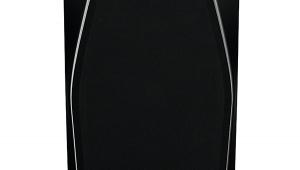KEF Blade One Meta Loudspeaker Special Source
When Quad launched its ESL-63 electrostatic back in 1981 it took the opportunity not to drive the thin film panel uniformly over its entire surface. Instead it was driven from the centre outwards, in a series of concentric bands, the signal to each progressively delayed so that the entire panel delivered a spherical wavefront from a notional, and far smaller, acoustic centre. Easily achieved, perhaps, with only one 'driver' but trying to emulate single-point source, if not a spherical wavefront, with a multi-way moving-coil loudspeaker is trickier still. An extreme example is provided by Cabasse's La Sphère [HFN Feb '10], a four-way coaxial design that also relies on digital filtering and delay to achieve a truly coincidental acoustic centre. KEF attempted the same ideal, arguably with greater elegance, when it launched the original Blade 'Single Apparent Source' speaker in 2011.

The Uni-Q driver [see exploded view, above, and MAT disc far right], with its treble dome located in the throat and sharing the same acoustic centre as the peripheral midrange driver, gives KEF a head start. However, marrying this point source to drivers covering frequencies below 350Hz required some leftfield thinking. Left and right, as it happens, with a combination of four bass drivers arranged in force-cancelling pairs on either side of the cabinet, equidistant above and below the Uni-Q driver. The opposing bass drivers necessarily have their acoustic centre where the two magnets meet in the centre line of the cabinet, the horizontal axis just fractionally behind that of the Uni-Q. But at bass frequencies, where wavelengths are very long and output increasingly omnidirectional, the acoustic centre of this cluster of bass drivers is coincident enough to that of the Uni-Q for KEF to claim a 'single apparent source'. PM
























































